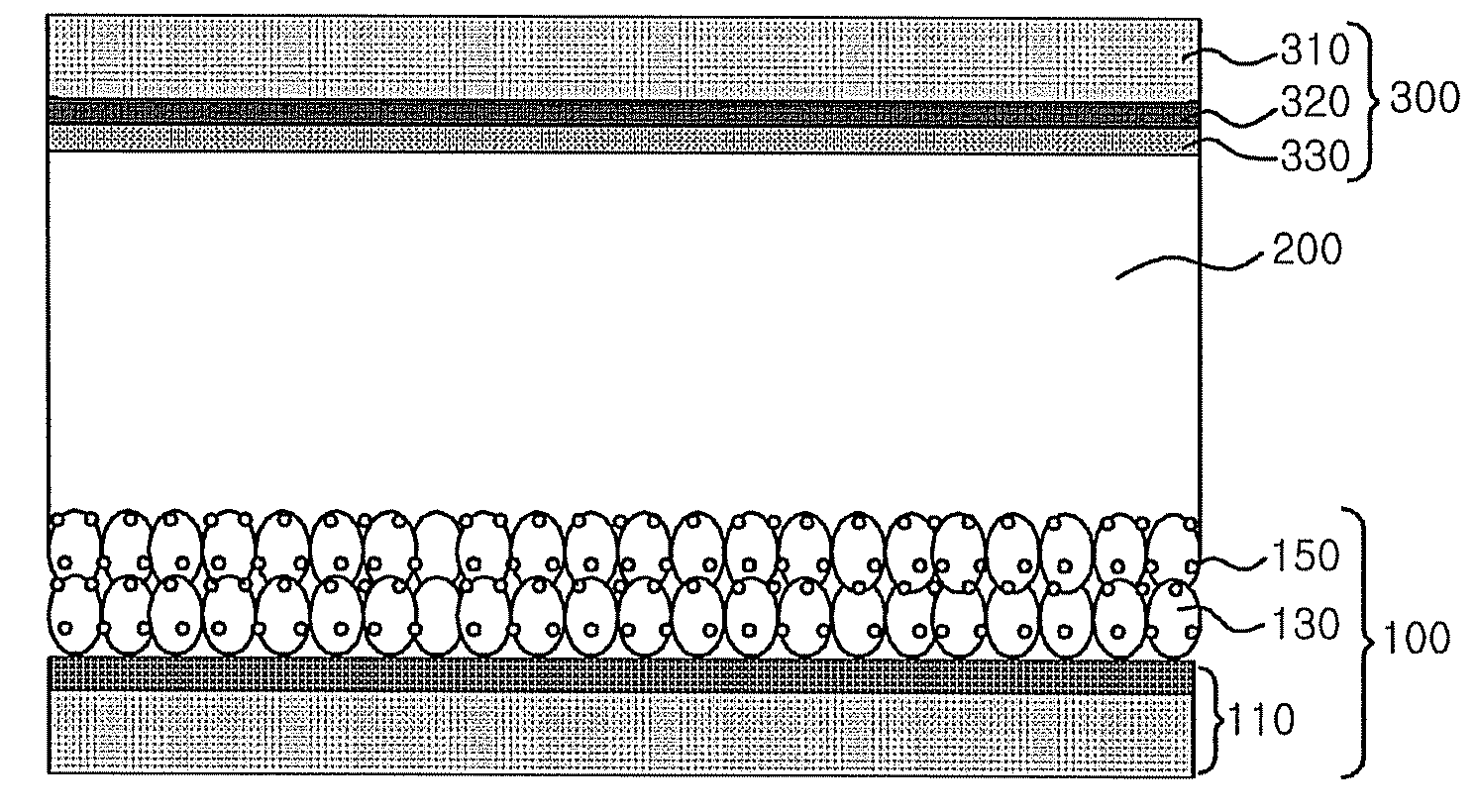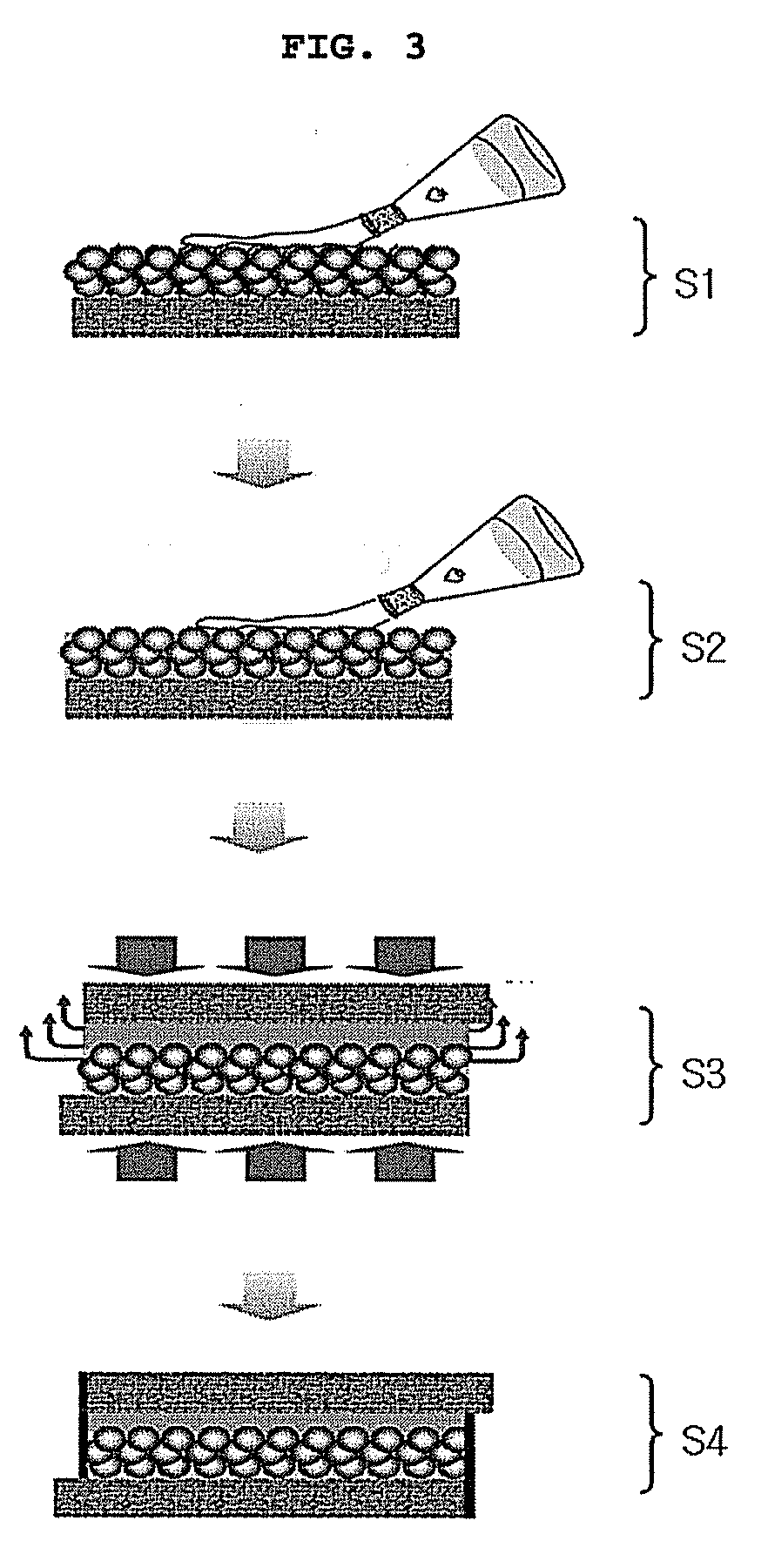Method for Modifying Surface of Counter Electrode and Surface-Modified Counter Electrode
a technology of counter electrodes and surface modifications, which is applied in the direction of electrolytic capacitors, coatings, solid-state devices, etc., can solve the problems of increasing the cost of fabrication, affecting the conversion efficiency of solar energy into electric energy, and affecting the conversion efficiency of solar energy into electricity, etc., to achieve the effect of improving the affinity of the counter electrode, reducing the interface resistance between the counter electrode and the polymer electrolyte, and increasing the electron transfer rate at the interfa
- Summary
- Abstract
- Description
- Claims
- Application Information
AI Technical Summary
Benefits of technology
Problems solved by technology
Method used
Image
Examples
examples 1 to 4
Fabrication of Test Devices
[0068]After fluorine-doped tin oxide (FTO) was sputtered on a glass substrate, a paste of anatase-type TiO2 particles having an average particle diameter of about 13 nm was coated thereon by screen printing and dried at about 70° C. for about 30 minutes. After completion of the drying, the resulting structure was placed in an electric furnace, heated at a rate of about 3 degrees Celsius per minute (° C. / min) in air, maintained at about 450° C. for about 30 minutes, and cooled at a rate of about 3° C. / min to form a porous TiO2 film having a thickness of about 12 micrometers (μm). Subsequently, the glass substrate, on which the metal oxide layer was formed, was dipped in an about 30 millimolar (mM) solution of a cis-bis(isothiocyanato)bis(2,2′-bipyridyl-4,4′-dicarboxylato)-ruthenium(II) bis-tetrabutylammonium dye (N719, Solaronix) in t-butanol and acetonitrile (1:1 (v / v)) for about 24 hours and dried to adsorb the dye on the surface of the TiO2 layer. After ...
PUM
 Login to View More
Login to View More Abstract
Description
Claims
Application Information
 Login to View More
Login to View More - R&D
- Intellectual Property
- Life Sciences
- Materials
- Tech Scout
- Unparalleled Data Quality
- Higher Quality Content
- 60% Fewer Hallucinations
Browse by: Latest US Patents, China's latest patents, Technical Efficacy Thesaurus, Application Domain, Technology Topic, Popular Technical Reports.
© 2025 PatSnap. All rights reserved.Legal|Privacy policy|Modern Slavery Act Transparency Statement|Sitemap|About US| Contact US: help@patsnap.com



